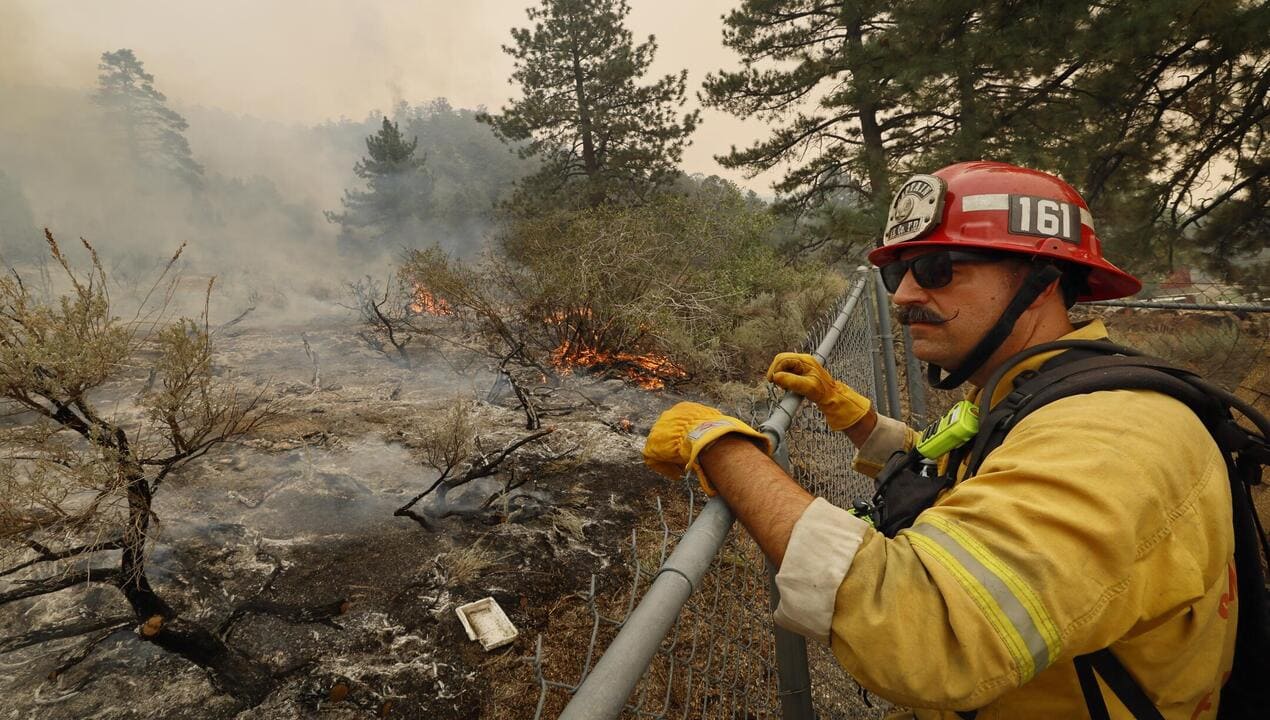
Independent Report – As wildfires continue to spread across the United States this year. Concerns have grown about the readiness and staffing levels of the U.S. Forest Service (USFS). Current and former employees have voiced criticism, claiming that workforce reductions under the Trump administration have severely impacted fire teams. Leaving them understaffed during a period of unprecedented wildfire activity. Despite these concerns, the USFS has denied these claims. Insisting that it has adequate resources to handle the increasing fire risks.
More than a dozen active and retired Forest Service employees shared with Reuters that the agency is struggling to fill essential positions. Approximately 5,000 workers, which represents about 15 percent of the USFS workforce, have left the agency in the past five months. Firefighters from states like Oregon and New Mexico, along with a fire chief involved in recruiting support staff in the Pacific Northwest. Explained that the vacancies have forced personnel to spend time on administrative duties instead of fighting fires directly.
One crew leader on a fire in Oregon described difficult conditions for her team. Including several days without enough food, shortages of medical supplies, and a lack of chainsaw fuel. These problems reportedly emerged after support staff left the agency during two rounds of voluntary buyouts called “fork in the road” offers. She revealed that firefighters had to work long hours and even went to bed hungry. However, she requested anonymity to avoid jeopardizing her employment.
Despite these troubling reports, the USFS maintains that it is prepared for what is expected to be a severe wildfire season. Particularly in California, the Pacific Northwest, and the northern Rockies. According to forecasts from the National Interagency Fire Center, this year could see more fires than usual. Isabella Isaksen, a USFS Public Affairs Officer responsible for operations in central Oregon. Expressed confidence in the agency’s staffing levels and readiness.
Also Read : ICE Accelerates Migrant Camp Construction Nationwide Efforts
Isaksen addressed the food shortage on the Oregon fire, attributing the issue to a new catering service. Which was swiftly corrected. She also confirmed that medical supplies, chainsaw fuel, and other necessary equipment were available during the blaze. Which burned over 3,400 acres and caused evacuations in two counties.
The Trump administration had promised not to reduce firefighting or public safety jobs. Even as it implemented staff reductions and early retirements aimed at increasing agency efficiency. The USFS manages a vast area of 193 million acres, roughly the size of Texas. And also is responsible for the largest wildland firefighting force in the country.
However, interviews with USFS employees revealed that the departure of thousands of foresters, biologists, trail builders. And also campground managers has indirectly affected firefighting efforts. Firefighters are not only covering empty positions at ranger stations but also losing many colleagues who switch from regular duties to firefighting support roles during fire season. These seasonal support workers typically join the effort from spring through fall.
USFS Chief Tom Schultz recently sent a memo urging managers to make all fire-qualified personnel, known as “red-carded” staff, available for the challenging fire year ahead. This memo came amid record-breaking fire activity, with nearly 41,000 wildfires reported year-to-date, the highest number in federal records since at least 2015. Schultz also stated in a Senate committee hearing that he was trying to rehire approximately 1,400 fire-qualified support staff who had previously taken buyouts.
Agriculture Secretary Brooke Rollins, who oversees the Forest Service, highlighted in June that the agency was on track to hire over 11,000 firefighters by mid-July, surpassing hiring numbers from the previous three years. By the end of June, nearly all of those firefighters had been hired, although the total was still slightly below last year’s level. The U.S. Department of Agriculture (USDA) has rejected claims that staff shortages pose a risk to communities, forests, or firefighters, stating that the Forest Service has the strongest and best-prepared wildland firefighting force worldwide.
Criticism from some politicians continues. New Mexico Senator Martin Heinrich condemned the firing and rehiring of probationary USFS staff and the widespread buyouts, which he believes have weakened the agency. He claimed that these actions have left the Forest Service ill-equipped to handle the ongoing wildfire season.
While the Forest Service acknowledges it does not have enough full-time wildland firefighters for the wildfire crisis, it relies heavily on red-carded support staff to bolster its firefighting capacity. However, not everyone agrees there is a staffing crisis. Steve Ellis, chairman of the National Association of Forest Service Retirees, reported hearing no complaints about support or supply shortages from firefighters in Oregon.
Conversely, Riva Duncan, a fire duty officer on a New Mexico fire and a retired USFS fire chief, stated that firefighters are sometimes used to fill gaps left by support staff losses. This includes answering phones, cleaning toilets, and mowing lawns, which takes them away from frontline firefighting duties. Duncan also said managers have pressured support staff to meet increased timber sales and energy production goals with fewer employees before assisting firefighters, making the situation more challenging.
Overall, while USFS officials maintain that the agency is prepared and adequately staffed, accounts from employees on the ground suggest that staffing shortages and administrative challenges continue to hinder wildfire response efforts during one of the most demanding fire seasons in recent memory.
Also Read : Viral at Coldplay Concert, Astronomer CEO Andy Byron Resigns